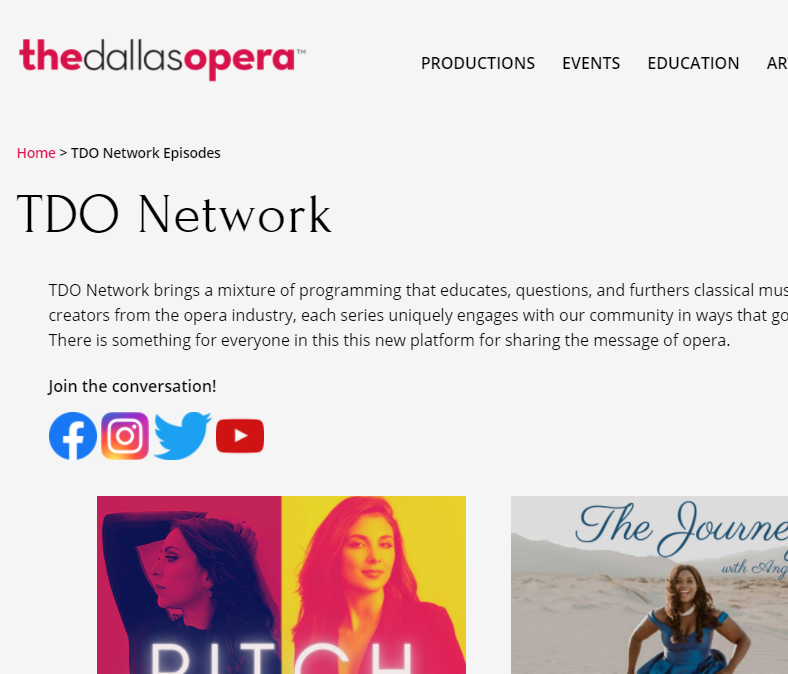
Post by Hannah Grannemann, Guest Editor
Part of the Series Audiences During the Pandemic
Arts organizations weren’t sure whether audiences would want to watch online content when everything stopped this spring. If they did, what would they want to watch? Plenty of arts organizations sent surveys, but what could audiences really tell us? They only knew what they had experienced before – performances, expert talks, behind the scenes videos, and…well, that was about it.
One of the primary benefits of this pandemic is that artists and arts organizations were all forced to experiment – even though they didn’t feel ready. They had to fight their perfectionistic tendencies (which I have as well; the arts are a great place for perfectionists), forego long artistic development processes and take some chances. They didn’t know how audiences would respond. If they put out beautifully captured stage performances, would audiences watching at home perceive it is less of an experience than the in-person experience, or would it inspire them to support us while they wait? If artists and staff are shown in their homes or backyards, will the audiences be interested? What about quality, the ideal to which we always aspire – what will our audience think if everything is shot on a smartphone? These were the worries. But everyone pushed through, and we got the huge range and variety and volume of content that’s out there now on websites and social media.
This wide-spread spirit of experimentation is itself an achievement. Arts organizations working through the anxiety of perfectionism to create and share new kinds of content is an important step. I don’t care that it took a collective “spaghetti at the wall” approach; we really needed a shakeup.
Dallas Opera is one of my favorite examples. They created the TDO Network, producing a wide range and large volume of content on a consistent basis. You just can’t miss the love of the art form that is conveyed in the videos. Also, they are not ignoring the larger social context by including many videos on racial discrimination in opera (here’s an early one in the series). The videos are accessible in the best possible way: they meet the audience at their point of curiosity about opera and they spark curiosity about aspects of opera that a viewer might not know about.
Here’s what works about Dallas Opera’s approach:
- The viewer doesn’t need to know a lot about opera. Yet the tone is not patronizing and the creators made it with all types of viewers in mind. Anyone who finds themselves there with even a passing interest in *maybe* learning something about opera will find a hook.
- But – their offerings are deep enough on a range of topics to interest an opera aficionado.
- It is truly interesting content about opera. It’s not like having someone who is a fan talking your ear off.
- It’s FUN. (Let’s be real – it should be fun, this is not the dentist.)
Dallas Opera is a model of how I think the staffs of arts organizations can share their enthusiasm and knowledge of their art form with their audiences. Audience who, by the way, DO WANT to enhance their experience of the performance with engagement, education, social opportunities, and a good time. Ben Walmsley, in his 2019 book Audience Engagement in the Performing Arts: A Critical Analysis, discusses the benefits of engagement activities for both new audiences and seasoned audience members. In the context of co-creation, he refers to his own research and that of Alan Brown, Jennifer L. Novak-Leonard and their collaborators showing higher impact when audiences are involved in co-creation (defined as either being involved in the creative process, or taking an active role in creating the value audiences derive from attending performances). “Meaning-making” by audience members increases the perceived value of the artistic experience, Walmsley argues, and arts organizations should make it possible for audiences to make meaning for themselves. Caroline Heim, in her 2016 book Audience as Performer: The changing role of theatre audiences in the Twenty-first Century, shares the experiences of many audience members’ describing their participation being enhanced by programs offered by the arts organization that allows them to process the performance and share their own criticism. This phenomenon of supporting and collaborating with audiences in meaning-making is of course championed most by the author of this blog, our own Lynne Conner in her work.
In this time when we can only create virtual engagement, we are presented with an opportunity for arts organizations to boost their skills for this “intermission” time and for a more audience-centered return.

Thanks for this example and your thoughtful and timely post. I agree to positive outcome is experimentation by arts orgs. The challenge will be to keep that spirit.
Thank you, Todd! Yes, we will all be watching carefully what will happen as time goes on, and especially as we do return to in person events. Will arts organizations continue offering digital content? More on that in my next post…